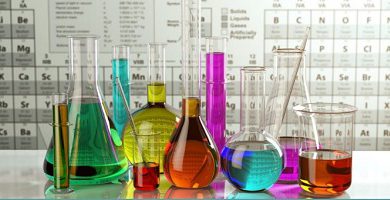What is a planet?
We explain what a planet is and what its main characteristics are. The planets of the Solar System and what is a natural satellite.
-
What is a planet?
A planet is a celestial body that revolves around a star , and that has enough mass to reach a hydrostatic equilibrium (between the force of gravity and the energy generated by its nucleus). This balance allows it to maintain its sphere shape, to dominate orbit (prevents other bodies from invading its path) and not to emit its own light, but to reflect the light of the star around which it gravitates.
Our planet Earth, like the seven remaining planets of the solar system , revolve around the Sun in orbit. They all share the characteristics that define a body as a “planet” and, nevertheless, present differences according to its composition and its location in the Solar system.
-
Characteristics of a planet

The planets of the Solar System are classified according to their composition, and can be:
- Rocky Planets Also called “telluric” or “terrestrial”, they are high density bodies formed by rocky and metallic materials. The planets Mercury, Venus, Earth and Mars are rocky.
- Gaseous planets Also called “jovianos”, they are large bodies, which perform a rapid rotation movement compared to Earth. These planets have a very dense atmosphere , generate powerful magnetic fields and have many satellites. The planets Jupiter, Saturn, Uranus and Neptune are of the gas type.
The planets are also classified according to their location with respect to the distance from the Sun, and can be:
- Inner planets They are the planets that are closest to the Sun, before the asteroid belt. They are Mercury, Venus, Earth and Mars.
- Outer planets. They are the planets that are furthest from the Sun, after the asteroid belt. They are: Jupiter, Saturn, Uranus and Neptune.
Since Pluto was discovered in 1930 it was considered a planet until 2006 when, after intense international debate, it was decided to re-categorize Pluto as a “dwarf planet” of the Solar System because it does not meet one of the characteristics to be considered a planet : It has no orbital dominance (its orbit is not free of other bodies in its path and has five satellites that have the same type of orbit). Pluto is a dwarf planet, with rocky characteristics and an exterior type because it is the farthest body from the Sun. Other dwarf planets have been recognized, in addition to Pluto, such as Ceres, Heumea, Makemake and Eris.
-
Solar System Planets

There are eight planets in our Solar System , in order from the closest to the farthest from the Sun:
- Mercury. It is the smallest planet in the solar system, has a rocky body similar to that of Earth and its nucleus occupies almost half of the planet (which generates a powerful magnetic field). It has no natural satellites.
- Venus. It is the third planet in terms of size (from smallest to largest), has a diameter similar in size to Earth and has no natural satellites.
- Earth . It is the fourth planet in terms of its size, which continues to Venus, and has only one natural satellite, the Moon . It is the densest planet in the Solar System and the only one that has water on its surface.
- Mars. It is the second smallest planet and is also known as “the red planet” due to its reddish appearance by the iron oxide of its surface. It has two small natural satellites: Phobos and Deimos.
- Jupiter. It is the largest planet in the Solar System. It is a gaseous type formed, for the most part, by hydrogen and helium, and has sixty-nine natural satellites .
- Saturn. It is the second largest planet (it follows Jupiter) and is the only planet in the Solar System that has planetary rings (dust rings and other small particles that revolve around it). It has sixty-one satellites detected, although it is estimated that the total number could be around two hundred satellites.
- Uranus. It is the third largest planet and has the coldest atmosphere in the Solar System. Its interior is mainly composed of ice and rock, and it has twenty-seven natural satellites detected.
- Neptune. It is the fourth largest planet and has a composition similar to that of Uranus, with a large proportion of ice and rock inside. Its surface is blue in appearance due to the presence of methane gas. It has fourteen satellites detected.
-
Natural satellite

A natural satellite is a celestial body that revolves around another star (in general, a planet) and accompanies it in its orbit around the star. It is characterized by being solid, smaller than the star it orbits and can be bright or opaque. Some planets may have several natural satellites that are held together by reciprocal gravity forces.
The natural satellite of our planet is the Moon , its size is a quarter of the Earth’s diameter and it is the fifth largest satellite in the solar system. It is at an orbital distance of thirty times the diameter of the Earth. The Moon takes twenty-seven days to circle around the planet and turn around on its own axis and, therefore, the same lunar face is always seen from the earth’s surface.
A natural satellite is not the same as an artificial satellite . The latter is manufactured by the human being , it also remains in orbit around bodies of space and, once its useful life ends, it is orbiting as space junk or it can disintegrate if it passes through the atmosphere upon its return.




